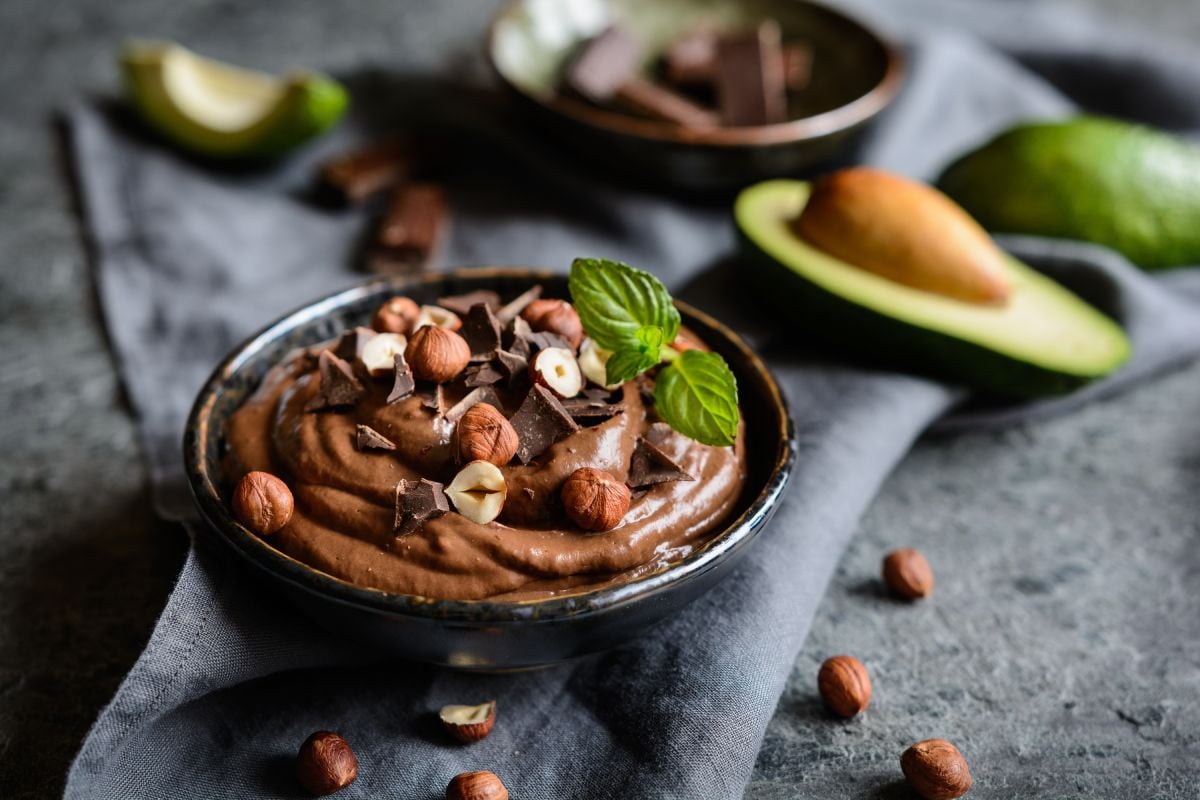In a single day, I had lechon kawali twice. Crispy, indulgently delicious, balanced with creamy liver sauces and spicy pickles. Both versions tickled the notions of what I know to be lechon. Both familiar and also not. They were vastly different lechons, one served in a takeout container atop garlic rice and a swathe of brightly acidic atchara, consumed while I was perched at a high-top table in the centre of the bustling Liberty Public Market in San Diego. Across town, the other lechon was splayed over a pool of perfectly astringent chicken liver sarsa, decorated with meticulously placed half-moons of stone fruit and leaves of micro sorrel and purple shiso, and I sat upon a mossy green velvet banquette in the middle of a crowded dining room draped in theatrical curtains, from which I watched the sun set over the water of the San Diego Bay.
Spurred on by the excitement publications like Food and Wine have shown for Filipino food recently, I made a point of returning to San Diego. Its sprawling suburbs remind me of Hawaii, where I grew up in a diverse and part-Filipino family (our Filipino ancestors had migrated to Hawaii at some point in the late 19th century).
My first time in San Diego was in 2019, to cook for the I Love Poke Festival, where I first had a taste of the city’s diverse islander population (Hawaiian, Filipino, Chamorro and beyond, many of these communities intertwined). In the years since, I’ve watched from across the country as San Diego’s chefs dug deep into their roots, pushing Filipino food into fine dining, and starting restaurant concepts that are Filipino-inflected and thoughtfully non-traditional, that speak to a wider Asian and Pacific Islander population.
Sitting down with chef Phillip Esteban after a busy lunch rush at his counter-service White Rice in Liberty Public Market, we talk about regionality and his idea of first-generation cooking. “My parents moved here from the Philippines, and that changed the trajectory of our food,” he says. While Esteban’s food looks to me as straightforwardly Filipino, he reminds me: “Tijuana and San Diego are one city, there just happens to be a wall between us.” This makes Esteban’s translation of Filipino food specific to this region.
Phillip Esteban, Instagram
Filipino food absorbed many influences and it’s important to remember that its dishes aren’t codified or inflexible. “I had to learn my own culture through food but when it comes to my culture, if there wasn’t colonisation, we wouldn’t have longaniza or empanadas.”
White Rice – which served me that magnificent, homey lechon in a takeout silog format, along with an almost improbably purple ube milk tea, ube pandesal with sweet ube butter, and ube cookies – opened in June 2021. Its location is intended to reach a wider audience. “I didn’t want to open White Rice in National City because that is Filipino town. There are hundreds of family-owned silog spots and turo-turos in National City so why would I do that? Why would I open it up where it already exists?” asks Esteban.
“White Rice is my childhood memories. In the food world, especially between chefs, there’s a big difference between traditional and authentic. At White Rice, the menu is based on silogs (garlic rice, an egg and your choice of meat), and we do it pretty traditional, like the ube pandesal, ube milk tea and these cookies. Well, they’re traditional and non-traditional. There are hundreds of thousands of traditional Filipino restaurants all around the country. What we cook is authentic to me and my chefs based on regionality, what we grew up eating, what’s available in terms of produce and meats. And despite this, our biggest criticisms are from the Filipino community. The older generations say, ‘That’s really great, but it’s not sisig.’ And chicken adobo. There are 152 different ways to make chicken adobo. But everyone here only knows the one way, with vinegar and soy sauce.”
Across town at the astonishingly dramatic Animae, where I step into a gold and moss green mystical forest dimension with kinilaw on the menu, executive chef Tara Monsod echoes Esteban’s ruminations on regionality and criticism from within the Filipino community.
“The only thing that separates us from Mexico are imaginary lines in the ocean and the border wall. This tuna? It’s local but it’s not an American fish. Fish don’t have borders. People forget – especially outside of California, they don’t realise Baja is local, but for us, it’s the same water.”
Grilled Chicken, Jim Sullivan
Like Esteban, she’s transforming the ingredients available to her – ingredients that her ancestors may not have worked with – into dishes that speak to her own memories. Ikura and bagoong, that infamous Filipino shrimp paste, coexist naturally next to kimchi fried rice and Chinese mantou. The menu at Animae is an amalgam of second-generation Asian flavours, filtered through the first-generation Filipino lenses of Monsod.
“I ended up at Animae because the second chef here needed help. I was working at Crack Shack at the time, and I took a risk because I needed a change. I wanted to be more creative and cook more Filipino food and I knew they would let me do that, even as a line cook. Then we closed for Covid for four months, reopened, and the group asked me to take over as the exec. It happened really quickly. At first, I told them they were crazy, there’s no way I could do this. Look at this place. It’s huge, beautiful. But it worked out.”
“And it makes sense,” I say, “to see lechon and kinilaw presented in this context.”
Monsod continues: “In culinary school, I asked why does Filipino food not have the same recognition as Japanese, Chinese or Thai food? It was always a goal of mine [to make this happen]. Every restaurant I worked at was everything but Asian food. There’s barely any fine dining Filipino food around here. Some people tried and it wasn’t accepted for whatever reason. I think some things just never hit the mark. I think our food is connected to a lot of nostalgia for some people and Filipinos, I always say, are the harshest critics because they want it done right. The aunties and uncles are not afraid to tell you it’s not right.”
Ahi Tuna, Photo by James Tran
Monsod sets a short rib kare kare in front of me that is decorated with a cascade of careful green onion curlicues and non-traditional but fitting purple shiso. Digging into the savoury coconut stew and long beans, this is boldly, unapologetically Filipino comfort food.
“What does your family think when they come to eat at Animae?” I ask her.
“I think my parents are mostly surprised how people are so receptive to our food. I think there’s a sense of insecurity when it comes to our food because when I would bring Filipino food to school, I would be made fun of by non-Filipinos. I think our community has often wanted to assimilate, not be looked down on – even though Filipinos have had a lot to do with American history. My parents come here, see bagoong on the menu and see people eating it, they ask, ‘They’re eating bagoong? They don’t complain that it smells?’”
“No, no they don’t. Granted I do mellow it out. I make sure my dishes are balanced. Bagoong is a very aggressive flavour, and I didn’t want to teach people to come here and teach them to eat my food. I want them to sit down and just dig in and get the right flavour profiles of how we would eat it without having to teach them how to eat it.”
Scallop Crudo, Photo by James Tran
Animae’s menu teases my senses. It forces me to question – what is comfort and what is luxury? Familiar flavours sidle up to unexpected preparations. A coal-roasted cabbage is fanned out and brushed with brown butter miso, sharing a table with tuna kinilaw, that surprising lechon kawali paired with stone fruit, and wontons stuffed with wagyu and spiked with chilli garlic oil.
Something else Esteban said elbows its way into my conversation with Monsod. “There’s a community of chefs now that are starting to be more comfortable in their own skin.” These are the ones who are pushing Filipino-American food forward.
“One guest told me: ‘This is what has been missing in San Diego.’ I think I got it to the point where people, Filipino and non-Filipino, are receptive to the food. In the end, the food just needs to taste good. That’s all it is.” Monsod laughs, “And I had to get the Filipino flavours right, because Filipinos were going to tear me apart if I didn’t get it right!”









